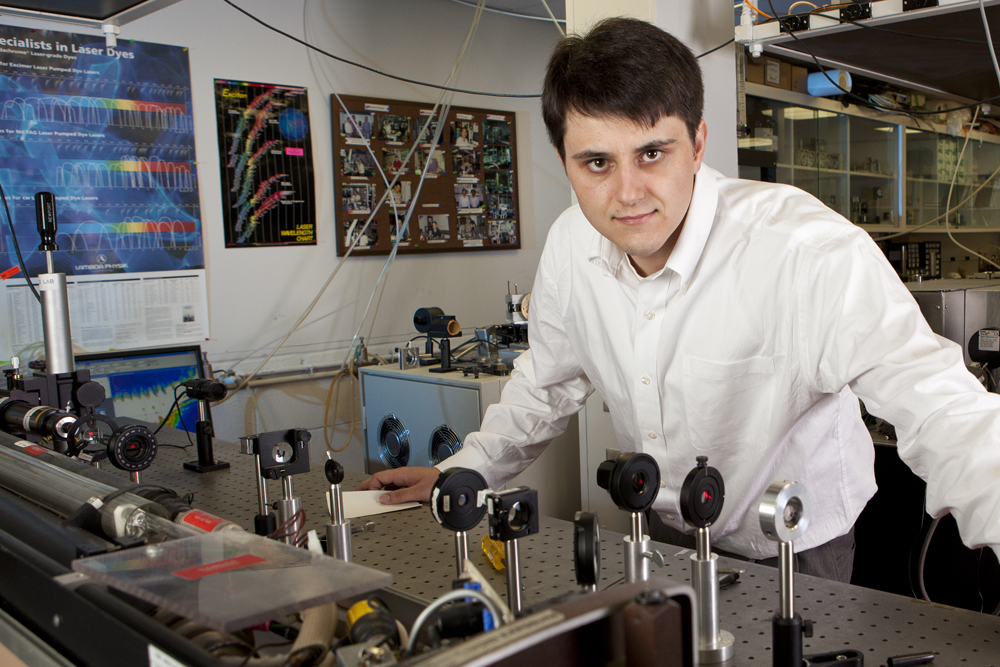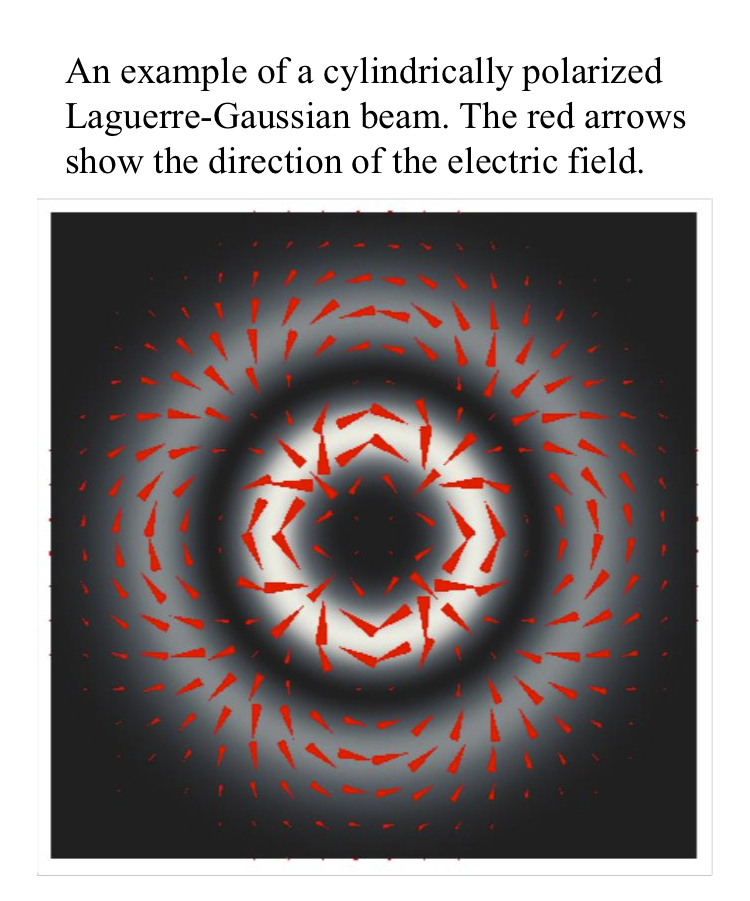 Lasers have been a source of wonder for many people since their invention only about half a century ago and William Lewis, an honors physics and mathematics major, is making it the focus of his honors thesis. What many people do not realize is that lasers are not all created equal. Under the direction of physics professor Reeta Vyas, William studies the polarization properties of cylindrically polarized beams.
Lasers have been a source of wonder for many people since their invention only about half a century ago and William Lewis, an honors physics and mathematics major, is making it the focus of his honors thesis. What many people do not realize is that lasers are not all created equal. Under the direction of physics professor Reeta Vyas, William studies the polarization properties of cylindrically polarized beams.
When William found out the mathematical descriptions of this beam did not work in every situation he went back to the drawing board and Maxwell’s equations to uncover a description (read: equation) of the beam which could be used by researchers whose work depends on polarization properties of the beam. Scientists will use this equation to investigate particle trapping (see article on particle trapping as applied to medicine), to sort and manipulate molecules (optical tweezers), and to create nanoscale imaging that could contribute to a treatment for multiple sclerosis.
Question: What is your favorite thing about lasers?
Answer: Probably my favorite thing is just how widely used they are in all different disciplines, you know, medicine, fundamental physics, chemistry, biology all sorts of things. It’s incredible to me that after just over 50 years lasers have found so many applications. And it seems like there are so many more to come. An example is optical trapping. You literally can hold a particle in place, suspended there. You can suspend a particle in midair with a beam of light. They’ve also done some interesting things with attaching DNA to little nanospheres and stretching it. That’s one of the experiments scientists have done to test the Young’s modulus of DNA, which is a measure of how much something stretches for how hard you pull it.
Question: What is the final goal of your research?
Answer: The primary fact that we discovered was that you have an extra component of the electric field along the direction of propagation of the beam called the longitudinal component, and so I derived an analytical expression, an equation, that describes that component. There were “in certain special cases” descriptions of the longitudinal component using different methods. But the theory that Dr. Vyas and I worked up can be used for any cylindrically polarized beam. It’s easier to apply in more cases.
I’ve already presented at four conferences, using money from the SURF grant, and I think I’m done presenting on this. I hope to be published.
Question: As your thesis defense approaches what type of advice would you give to students just now starting their own research?
Answer: Oh man, a lot. Better time management. That’s the number one thing. Dr. Vyas has been very patient and supportive and I have a lot of pieces of things I’ve written; six pages here, eight pages there, so on and so forth, but I haven’t actually gotten a draft of my thesis done and that is sort of an overbearing cloud; it’s there. It’s the elephant in the room. My plan is just to work.
Also, don’t be overly confident in your work. I messed one up and wrote something wrong down and had to go back when I found it and change all the stuff I had written and all the programs I had written in Mathematica. It took like two weeks to go through and fix everything. So, triple-, no, quadruple-check everything that you do.
Question: Where do you see yourself in 15 years?
Answer: Assuming that I’ve gotten all of my graduate and post-doc work done I feel like I would be happy ending up as a faculty member at a university similar to the U of A. I really feel like getting involved in research has changed my appreciation for the differences between the knowledge that you can get doing coursework and the knowledge that you can get actually working out things yourself in the lab. As a result, I would like to work somewhere that would allow me to mentor undergraduate students. I think a lot of universities do that, but I feel like the U of A has a really really strong background in that. If I could I would come back to the U of A and teach here. I love the faculty in the physics department. I would consider it an honor to be able to work in the same setting with them. I really like Fayetteville, I just feel like it’s a great place and it has great people.
Question: Does any one classroom experience stick out in your mind?
Answer: Dr. Oliver’s UPIII (University Physics III) class. It was really fun the day he asked us a question having to do with Faraday’s law. I came up with an answer that I guess he hadn’t heard before and he told me that I had “added a brick to his wall of intuition.” That actually really meant something to me coming from Dr. Oliver.


